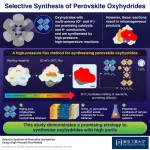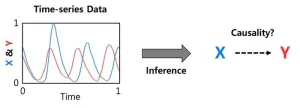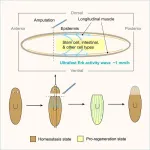(Press-News.org)
Alzheimer’s disease (AD), which affects an estimated 6.5 million adults in the United States, hits some groups harder than others. Compared to non-Hispanic whites, Hispanic Americans are 1.5 times as likely to develop AD, and African Americans are twice as likely.
But scientists know little about the reasons behind these disparities, because the vast majority of AD research has been done with non-Hispanic white people.
A new study that reviewed 11,871 research articles on AD brain imaging, led by researchers at the Keck School of Medicine of USC, has now revealed the extent of the gap in representation. Overall, approximately 84% to 87% of study participants are non-Hispanic white. (Non-Hispanic white people make up less than 60% of the U.S. population.) According to the new research, funded by the National Institute on Aging, all racial and ethnic minority groups, including Black/African Americans, Hispanic/Latinos, Asian Americans and American Indian/Alaska Natives are underrepresented. The results were just published in Communications Medicine, a Nature journal.
“As far as we know, this is the most comprehensive review of representation in the Alzheimer’s disease neuroimaging literature,” said senior author Duke Han, PhD, director of neuropsychology in the Department of Family Medicine and a professor of family medicine, neurology, psychology and gerontology at the Keck School of Medicine. “It gives us a good sense of the current state of the literature and what needs to be addressed moving forward.”
A gap in representation
From the pool of nearly 12,000 studies on AD and neuroimaging, the research team identified a subset of papers that recruited samples in the U.S. and met other experimental criteria. In their final analysis, they calculated representation for 719 studies that reported participant race or ethnicity directly (“direct studies”) and 1,745 studies that drew from external databases where race or ethnicity was reported (“indirect studies”).
The researchers reported the median diversity statistics from the studies they analyzed, meaning those that fell in the middle of the range, to avoid results being skewed by extreme outliers. Among direct studies, 87.4% of median study participants were non-Hispanic white, 7.3% of participants were Black/African American, 3.4% were Hispanic/Latino and 0% were Asian American, Native Hawaiian/Pacific Islander, and American Indian/Alaska Native, multiracial or another race. Indirect studies derived from larger databases were slightly more diverse, with median representation of 83.7% non-Hispanic white, 11.6% Black/African American, 4.7% Hispanic/Latino, and 1.75% Asian American participants. In all cases, minority groups were underrepresented relative to their share of the U.S. population.
“This is a pretty big deal, especially as we look toward the future, where an increasing proportion of the U.S. will be ethnic minority groups,” said Aaron Lim, PhD, a postdoctoral fellow in Han’s research lab and first author of the study. “If their representation isn’t adequately captured, then this disparity in research will grow and grow.”
The researchers also found that 94% of indirect studies drew from just 10 shared databases, suggesting that these large, multi-site studies—which collect data from thousands of participants over many years—are driving a sizable chunk of AD research.
“If that’s the case, it’s incumbent upon those research groups to adequately represent the communities they are recruiting from,” Lim said.
A two-pronged approach
Improving representation in the AD neuroimaging literature will require a two-pronged approach, said Han. First of all, large, multi-site studies need to recruit more diverse samples.
Fortunately, that is already starting to happen, thanks in part to grants from funding agencies (such as the National Institute on Aging) specifically geared toward improving diversity. In 2020, the Alzheimer’s Disease Neuroimaging Initiative, one of the largest studies of AD, launched a new effort to recruit underrepresented minority groups. Those changes are even starting to be reflected in the literature: Han, Lim and their colleagues found that representation of Black/African American participants increased from 3.39% between 1994 and 2017 to 8.29% between 2018 and 2022.
Smaller AD studies focused specifically on collecting brain scans of people from ethnic and racial minority groups will also be key. Those can help capture details of participants’ lived experience, Lim said, including how systemic inequities such as health care access or socio-economic status may affect AD risk.
“In the past, some researchers were so focused on recruiting large groups of participants, that it took priority over the importance of representation,” said Han. “Now, there’s an increasing focus on balancing numbers with representation. This increased emphasis on diversity in neuroimaging is a welcome sight.”
About this study
In addition to Han and Lim, the study's other authors are Annie L. Nguyen and Jennifer Herrera from the Department of Family Medicine, Keck School of Medicine of USC; Laura Fenton from the Department of Psychology, USC Dornsife College of Letters, Arts, and Sciences; Lisa L. Barnes and Melissa Lamar from the Rush Alzheimer’s Disease Center, Rush University Medical Center; and Gali H. Weissberger from the Interdisciplinary Department of Social Sciences, Bar-Ilan University.
This work was supported by the National Institute on Aging [K24AG081325, 1R01AG055430, 1RF1AG068166, T32AG000037, 5R01AG056405, R01AG062711, K01AG064986].
END
Cancer patients saw a significant fall in Covid-related hospitalisations and mortality following the rollout of vaccines in the first panoramic study of its kind.
The research published in Scientific Reports today (Tuesday 25 July) looked at the impact of the global pandemic on case-outcome rates for cancer patients across a 21-month period from November 2020 to August 2022. The team of researchers led by the University of Birmingham found that hospitalisations in the period fell from nearly one in three patients (30.58%) to one in 13 patients (7.45%); and, case-mortality rates fell from more than one in five patients (20.53%) to less than one in 30 patients (3.25%).
Among ...
A new paper in Biology Methods & Protocols, published by Oxford University Press, shows it may be possible to design vaccines that will induce a stronger immune response to infecting pathogens, such as the virus causing COVID-19. In this study, the authors proposed and tested a new bioinformatic approach and tool that allows researchers to select parts of proteins that will elicit a strong immune response. Vaccines developed based on this approach would provide better protection from diseases.
The immune system of humans (and other vertebrates) discriminates between self and non-self structures to attack and destroy the latter. T cells are the part of the immune system ...
Adding a flux during the synthesis of oxyhydrides is a promising strategy to obtain a pure, homogenous product, reveal scientists from Tokyo Tech. An SrCl2 flux promoted the melting of a part of reactants and facilitated their diffusion of reactants, which proved to be the key to producing highly pure SrVO2.4H0.6 or Sr3V2O6.2H0.8 perovskite oxyhydrides in high-pressure and high-temperature reactions. These compounds have potential as catalysts and as electrode materials for lithium-ion batteries.
Perovskite oxyhydrides ...
As a bold venture at the forefront of biomedical research, the PULSE project is poised to develop paradigm-changing bioprinting technology for applications in space and on Earth. Awarded nearly 4 million euros by the European Innovation Council’s Pathfinder Open, PULSE emerges from interdisciplinary scientific collaborations and, over five years, will foster technological innovations to improve human health and pave the way for safer and more sustainable space exploration.
By combining magnetic and acoustic levitation into an innovative bioprinting platform, PULSE’s device should be capable of achieving unparalleled spatiotemporal control of cell deposition. ...
Philadelphia, July 25, 2023—In the largest study of its kind, researchers from Children’s Hospital of Philadelphia (CHOP) used electronic health record (EHR) data from more than 200,000 pediatric patients to describe patterns of pediatric allergies across the United States, validating a population-level pattern of allergy development known as the “allergic march,” in which allergies first present as eczema, followed by food allergies, asthma, and environmental allergies. The ...
In the quest to unravel the underlying mechanisms of natural systems, accurately identifying causal interactions is of paramount importance. Leveraging the advancements in time-series data collection through cutting-edge technologies, computational methods have emerged as powerful tools for inferring causality. However, existing model-free methods have struggled to differentiate between generalized synchrony* and causality, leading to false predictions. On the other hand, model-based methods, while accurate, have been limited by their dependence on specific models, hindering their widespread applicability.
*Synchrony ...
In-cell engineering can be a powerful tool for synthesizing functional protein crystals with promising catalytic properties, show researchers at Tokyo Tech. Using genetically modified bacteria as an environmentally friendly synthesis platform, the researchers produced hybrid solid catalysts for artificial photosynthesis. These catalysts exhibit high activity, stability, and durability, highlighting the potential of the proposed innovative approach.
Protein crystals, like regular crystals, are well-ordered molecular structures with diverse properties and a huge potential for customization. They can assemble naturally from materials found within cells, which not only greatly reduces the synthesis ...
Can poor sleep and circadian rhythm make chronic pain conditions worse? Edson College Assistant Professor Chung Jung Mun plans to find out through an innovative longitudinal study.
Mun was awarded a $3 million grant from the National Institute of Neurological Disorders and Stroke, part of the U.S. National Institutes of Health, to explore the possible connection.
“There are countless individuals suffering from multiple chronic pain disorders. A person with chronic migraine headaches is also likely to suffer from chronic low back pain. What we’re trying to find ...
A Texas A&M University doctoral student has collaborated with an innovative surgical navigation and robotics company on motion capture research that can potentially improve implant alignment during knee replacement surgeries.
Aaron Henry is a fourth-year Ph.D. student in the Doctor of Philosophy in Interdisciplinary Engineering program in the Department of Multidisciplinary Engineering. He worked with Caira Surgical, a surgical navigation and robotic orthopedic surgery company that focuses on simplifying workflows and developing technological ...
A mouse injured on one leg experiences an “awakening” of stem cells in the other leg as if the cells are preparing to heal an injury. Something similar happens in axolotls, which are masters at limb regeneration. Heart injuries in zebrafish can trigger certain changes in far-away organs like the kidney and brain.
“In many different organisms, you can see the whole body respond to an injury. But whether or not those responses actually have any function has been unclear,” says Bo Wang, assistant professor of bioengineering at Stanford, “So that’s what we’re focusing on.”
In ...





